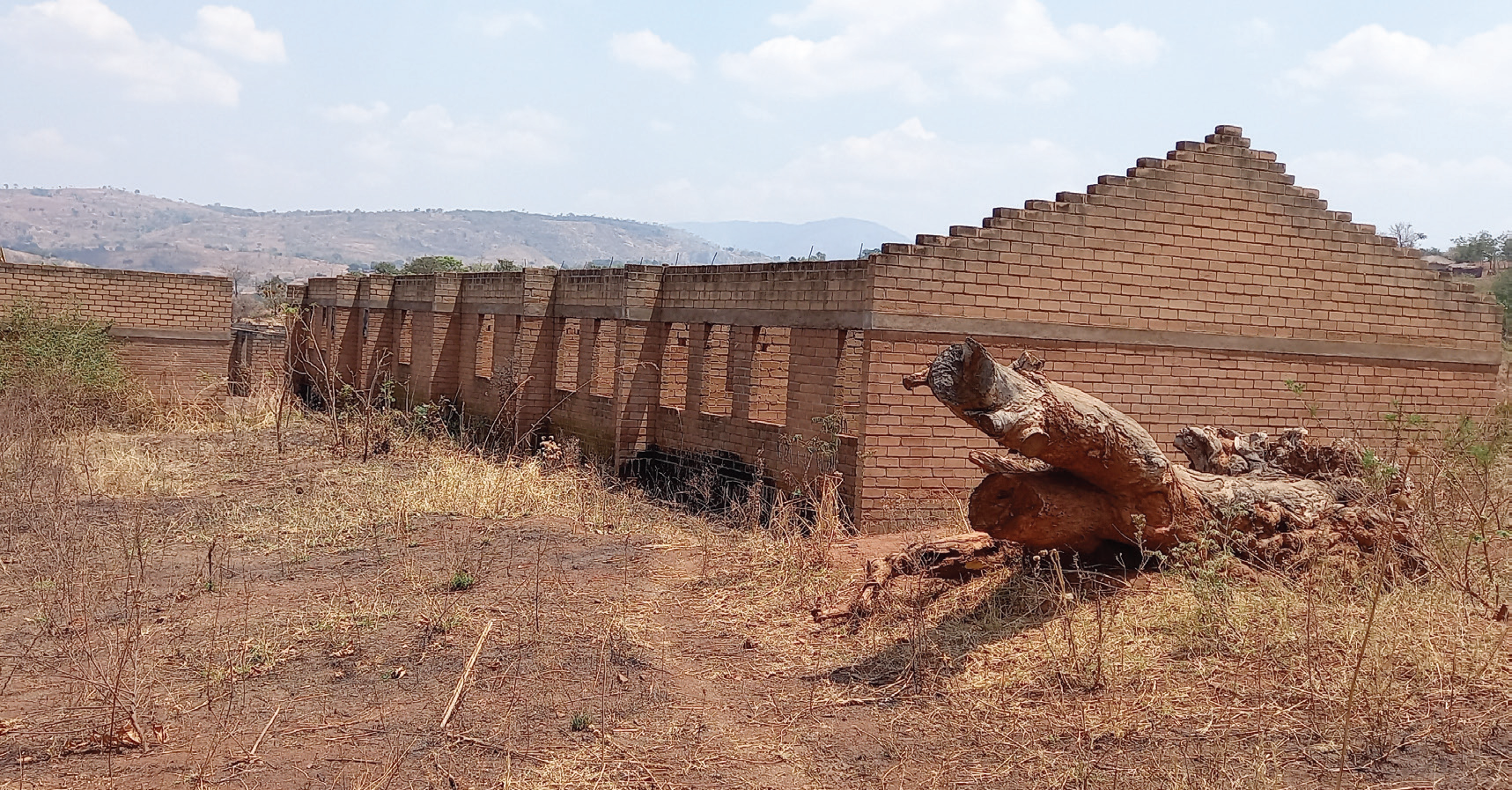A healthcare sector in agony
Against a pulpit in a tiny church at Chafumbwa on the outskirts of Ntchisi District leans a board anchoring children’s vaccines record cards.
The structure, in its architectural design, is primitively humble. Its floor is lined up with thick concrete seats made of cement and the walls are un-plastered.

That said, this building is genuinely valuable as it offers both divine and scientific defence as it is also used as a makeshift under-five clinic.
On designated days, under-five children take vaccines to protect them against measles, polio and hepatitis B.
A few metres away from this church building sits an abandoned hospital project. With five of its structures a roof away from completion, it was deserted eight years ago, trashing hopes of the surrounding communities.
Village head Lombwa, whose area covers the project site, complains that the church cannot safely store drugs and other medical amenities.
“It was this [incomplete] hospital which we hoped would offer our health needs. Now we still have to travel long distances to access medical care. It is painful,” he says.
The village head says efforts to persuade the government to revamp the project through consultations with health authorities have not yielded anything.
The nearest health centre from the village is Kangola which is several kilometres away.
On her part, Chafumbwa Mother Care Group chairperson Solofonika Biziwiki says most residents travel for over three hours to reach the facility.
She says: “As you can see, Ntchisi is a hilly place. Travelling to the hospital is a tough task. This is even tougher for mothers, especially when their children fall ill as the under-five clinic here is not always open.
“We face the burden of carrying our babies and travelling long distances to seek specialised medical help. Some don’t even dare to travel and risk death.”
In group village head (GVH) Kawinga in Traditional Authority (T/A) Chilowoko in the same district, an under-five clinic also operates from a church building.
The challenge of travelling long distances to access medical care is faced by hundreds of communities and exposes the Ministry of Health’s struggles to achieve its 2017-2022 Health Sector Strategic Plan II (HSSP) goals which include increasing the number of health facilities and equipment.
It reads in part: “Priority will be given to the completion of unfinished projects and rehabilitation and upgrading of existing facilities in terms of additional staff housing, utilities, theatres and storage space, among others.
“The following are the priority strategies: Ensure availability of quality infrastructure, availability of quality, safe and functional medical equipment [and] explore options of leasing high-cost medical equipment and using Public Private Partnerships for operating and managing high-cost medical equipment in major hospitals…”
At the onset of the HSSPII implementation, there were 977 government and privately-owned hospitals, clinics and health centres against 18 million people in the country, giving a ratio of one facility against 18 000 people. This falls short of the World Health Organisation recommendation of a 1: 10 000 ratio.
The government’s goal, as spelt out in its strategic plan, is that every Malawian should live within an eight kilometre radius of a health facility.
However, Malawi Health Equity Network executive director George Jobe says this dream is far-fetched considering that most Malawians still travel long distances to access medical care.
In an interview this week, he said one of the challenges is that most health facilities are concentrated in urban areas.
Said Jobe: “In rural places, some people travel over 20 kilometres to get treatment. The health sector needs much support, including that of the corporate sector.”
In a response to a questionnaire yesterday, Ministry of Health head of health infrastructure development Sanderson Kuyeli said the ministry has so far added four health centres to the existing facilities—Nancholi in Blantyre, Chilanga in Zomba, Osiyana in Nsanje and Thuchila in Thyolo.
He said: “The Phalombe District Hospital is also almost ready for opening. We are making final touches on access roads and non-medical equipment. The facility will be functional before the end of this year.”
Kuyeli further stated that they have also built staff houses in about 10 health facilities which include at Usisya, Kande, Maula and Thoto in Nkhata Bay, and Edingeni in Mzimba.
He added that, under the strategic plan, they have rehabilitated and expanded 12 health facilities in the Northern Region under the Provision of Basic Health Service project.
The project is being funded by the World Bank and the Health Service Joint Fund in partnership with KFW-German Development Bank, Norway, Foreign and Commonwealth Development Office and Malawi Government.
Commenting on Chafumbwa Health Centre, Kuyeli admitted that it will not be completed anytime soon:
“Some [projects] may slightly go beyond in the case of Chafumbwa in Ntchisi, Chiponde in Lilongwe and Kanyenga in Mangochi as the contract was terminated and the process of reworking on the resources and reengaging new contractors is ongoing.”
On achieving the eight-kilometre radius target, he said: “There is still more work to be done. Government is still committed to achieve this not only in infrastructure establishment but also in mobile services and other innovative ways.
“Currently, government has embarked on a project of constructing 900 health posts in hard-to-reach areas.”





